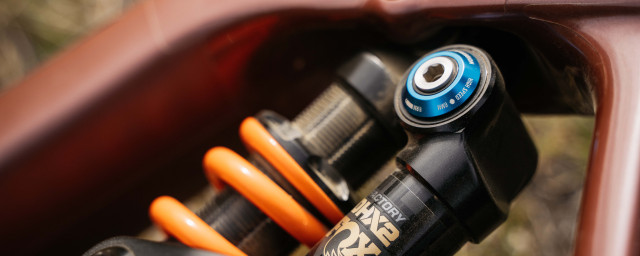SRAM NX vs GX: which drivetrain is best for you?

When it comes to choosing the best MTB groupset, SRAM is a highly considered choice owing to the brand's reliability, performance and durability. When the American drivetrain brand went beyond the front derailleur in 2012 and ushered in the 1x standard, it spawned a new era for off-road cycling. Four years later, 12-speed Eagle drivetrains became the norm and, with it, a host of more affordable trickle-down drivetrain options followed.
- SRAM GX Eagle 12spd drivetrain first ride
- Your complete guide to SRAM MTB drivetrains: XX1, X01, X0, X1, Eagle GX, NX, EX1 and AXS groupsets
- Is SRAM looking to kill the mech hanger?
SRAM NX Eagle offers the benefits of 1x12 shifting for an investment that won’t ruin your bike budget. But what are the sacrifices when choosing the affordability of NX over GX Eagle? Keep reading to learn the differences and understand which drivetrain is best for the type of riding you enjoy.
> Buy now: SRAM NX Eagle 12 Speed Mountain Bike Groupset from Chainreactioncycles for £259.99
> Buy now: SRAM GX Eagle 12 Sp DUB Drivetrain Groupset from Chainreactioncycles for £411.75
SRAM NX vs GX: the weight debate
Tabulate all those bits that comprise a mountain bike drivetrain (from crankset to chain), and the difference is 15%. But that's not quite the full basis for comparison if your decision point between NX and GX is founded on the principle of being gram obsessed.
Rotational weight matters more than sprung weight. Components that rotate have a greater influence on your riding efficiency and fatigue than components that remain in a relatively fixed position, once fitted. Therefore, you need to compare specific rotational bits of the NX and GX drivetrains to know if that 15% weight difference is universal.
The NX rear derailleur is 340g, compared to a GX’s rear mech weighing in at 290g. The difference there is just over 17%. But derailleurs aren’t rotation mass, now are they? And therefore, a slightly larger weight discrepancy between NX and GX derailleurs can be tolerated.
SRAM NX vs GX: rotational weight matters
Cassettes and cranksets are what matter with a drivetrain’s rotational mass and potential fatigue coefficient. These two components account for the most weight in your drivetrain. As rotational components, any grams saved with a lighter cassette or crankset make a difference you can feel when riding.
> Buy now: SRAM GX Crankset for 12-Speed Cassettes from eBay for £130.68
Within the SRAM’s mountain bike crankset hierarchy, GX is only 10% lighter than NX, but when you place those cassettes on a digital scale, the product grading becomes very obvious. At 612g the NX cassette is a lot heavier than the 450g GX version. The difference is 36%, which is massive, and this difference in cassette weight is probably the most notable specification differentiator between NX and GX.
Not only is the NX Eagle cassette a lot heavier than a comparable GX Eagle set of 12 stacked cogs, but it has less range, too. The SRAM NX cassette specification is 11-50T, calculating to a range of 454%. That’s generous but with the latest SRAM product upgrade to GX, you can opt for a 10-52T Eagle cassette, with a gearing spread of 520%, sure to get up even the steepest climbs without maxing out that heart rate.
SRAM NX vs GX: compatibility concerns
It isn’t all advantage-GX, though. The NX cassette might be much heavier, with a slightly tapered gearing range, but it does offer fantastic component convergence.
For riders who don’t want to bother with the issue (and cost) of upgrading drivers on their rear hub, NX wins. It can be mounted on a cheaper and more accessible HG freehub, without requiring a SRAM XD driver upgrade, as is the case with GX.
> Buy now: SRAM NX Eagle PG1230 Cassette - 12 Speed from Merlin Cycle for £69.95
Cassettes are the biggest influence on your mountain bike’s gearing and related to the NX/GX drivetrain debate, it is a question of weight versus cost and convergence. But there are other issues to consider, too, when comparing NX to GX.
SRAM NX vs GX: shifting performance
If you compare the SRAM NX and GX rear derailleurs, the latter has more structural stiffness, which allows it to be configured with closer shifting tolerances. A more robust and accurately aligned rear derailleur will also retain its shifting accuracy for longer, before requiring some tweaking.
The same shifting logic from the rear of your bike applies to its handlebars. GX shifters are tauter to the touch, with less play. For riders who value the tactile feedback of a more responsive shifter to the touch, the truth is that a SRAM NX shifter will never feel as haptic as GX.
Some of the shifter feel difference between NX and GX is attributable to material choice, with the cheaper NX shifters being plastic, with some metal within the GX shifters’ structure.
SRAM NX vs GX: which is best for you?
The cost difference between NX and GX is not insignificant. And for riders who are sensitive to budget, the issue of additional upgrade costs, such as an XD driver, could make a case for NX, as their value 1x12 drivetrain choice is a given.
The cassette weight and narrower range with NX are considerations, and it is worth remembering that you can’t run the wider range 10-52T GX cassette as an upgrade, with an NX drivetrain. SRAM’s engineered the NX rear derailleur to only work with cassettes up to 50T.
But the NX offers a lot for riders who want a deep-value 1x12 drivetrain for their mountain bike and don’t mind working a little harder up the climbs or shifting a touch slower. The SRAM NX drivetrain is a superb offering for those wanting to access 12-speed performance for less money and the headache that comes with upgrading rear hub driver bodies.












